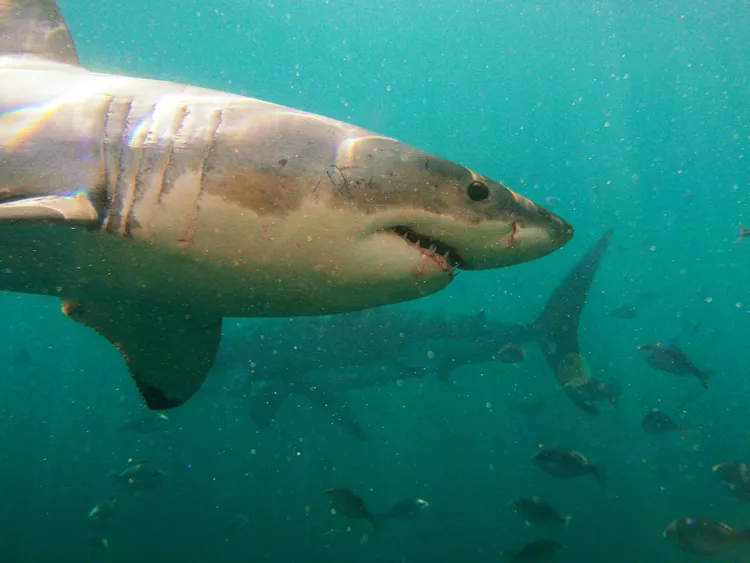Summary
If the fear of sharks keeps you from enjoying the ocean, you’re not alone. It’s a fear shared by millions — instilled into the public consciousness with the 1975 release of the movie Jaws, and perpetuated by films like Open Water and The Shallows ever since.
However, it is also a fear that is largely unfounded. Shark-related incidents are rare — in 2016, the International Shark Attack File shows that there were 81 unprovoked attacks worldwide, of which only four were fatal. The reality is that sharks are not the mindless killers they are so often portrayed to be. Instead, they are supremely evolved animals with seven different senses and skeletons made entirely of cartilage. Some sharks can navigate across oceans, while others are capable of reproducing without having sex.
Above all, sharks fulfill a vital role as apex predators. They are responsible for maintaining the balance of the marine ecosystem — and without them, the planet’s reefs would soon become barren. Here’s why sharks should be respected and conserved, rather than feared.
1. The Vast Majority of Sharks Are Harmless

For most people, the word “shark” conjures up the image of thrashing great whites, their open jaws lined with serrated teeth. In reality, there are more than 400 different shark species, ranging from the dwarf lantern shark (a species smaller than the human hand) to the whale shark, an ocean giant that can grow to over 40 feet/ 12 meters in length. The majority of shark species are considered harmless, as most are smaller than humans and instinctively avoid contact with them.
Three of the largest shark species (the whale shark, the basking shark, and the megamouth shark) are filter-feeders, living mainly on a diet made up of plankton. Only a handful of species have been implicated in shark-related incidents, and of these, only three are routinely considered dangerous to humans: the great white, the bull shark, and the tiger shark. These species are large and predatory and inhabit areas frequented by human water-users, consequently increasing the likelihood of encounter.
However, in countries like Fiji and South Africa, tourists dive safely with these species every day, often without the protection of a cage.
2. Humans Are Not Natural Shark Food

Sharks have been around for between 400 and 450 million years. Throughout this time, different species have evolved to hunt specific prey; however, not one of them is conditioned to react to humans as a source of food. Sharks typically avoid attacking animals larger than themselves due to the risk of injury. For most species, this means that humans are off the menu. Research indicates that even larger sharks like great whites and bull sharks do not intentionally hunt people for food; instead, they prefer prey with a high fat content, such as seals or tuna.
Some scientists believe that attacks may be a case of mistaken identity. Great whites, tiger sharks, and bull sharks typically hunt from below and may confuse the silhouette of a person on the surface for that of a seal or turtle, particularly if the person is on a surfboard. However, other scientists disagree, arguing that sharks are intelligent enough not to confuse humans for prey, given that they have a well-developed sense of smell and humans have a scent that bears no resemblance to seals.
Instead, most attacks are likely the result of curiosity. Sharks don’t have hands; when they want to investigate an unknown object, they typically use their teeth. This theory is supported by the fact that few shark attack victims end up being eaten. Most people are bitten once before the shark loses interest and swims away. Unfortunately, injuries sustained are often so severe that the victim dies from trauma and loss of blood before receiving adequate medical attention.
3. Sharks Are the Least of Your Worries

According to an article published by the International Shark Attack File, humans have a one in 3.7 million chance of being killed by a shark. In fact, your trip to the beach is 132 times more likely to end in death by drowning, and 290 times more likely to result in a fatal boat accident. When considering stepping into the sea, it is worth remembering that you are also 1,000 times more likely to die while cycling. Oddly enough, items regarded as more dangerous than sharks include coconuts, vending machines, and toilets.
Moreover, people represent the most dangerous animals of all. Excluding murder, between 1984 and 1987, 6,339 individuals reported being bitten by another human in New York City. In comparison, across the entire United States, only 45 people were injured (not killed) by sharks within the same period. Therefore, if you currently reside in New York, you have more to fear from your fellow subway-riders than from a dip in the sea.
4. Minimizing the Risk of Attack Is Easy

If you’re still nervous, there are several easy steps to minimize the risk of a shark attack. Firstly, stay out of the water at dawn and dusk, periods when most large shark species hunt. Secondly, remove any shiny jewelry, as the glimmer of silver and gold can easily be mistaken for the shimmering scales of prey fish. There’s also a theory that the color yellow attracts sharks.
In reality, it’s more likely that a shark’s curiosity is piqued by the contrast of lighter shades against the dark blue of the sea. Therefore, if spending considerable time in the water, avoid pale colors in fins or bathing suits — and cover pale skin with a wetsuit, gloves, or booties. Additionally, how you spend your time in the water matters. Since sharks hunt from below, surfers and surface swimmers are more at risk than scuba divers.
Sharks can perceive vibrations in the water, which makes spearfishermen particularly vulnerable due to the scent and movement of dying fish. Consequently, when diving with sharks, it’s advisable to create as little commotion as possible upon entering or exiting the water. Contrary to common belief, there is no evidence that sharks are attracted by the scent of menstrual blood or human urine.
5. Sharks Have More to Fear From People

It is estimated that 90% of the world’s sharks have disappeared from our oceans in the last century. This alarming decline is due to human activity, including climate change, habitat loss, and notably, overfishing. Every year, an estimated 100 million sharks are killed by humans— approximately 11,417 every hour. The majority of these sharks are shipped to markets in Asia, where shark fin soup is regarded as a delicacy and a status symbol.
Shark finning is an inhumane practice, with many sharks finned at sea and discarded back into the ocean to drown. Given that fins constitute less than 5% of an average shark’s body weight, this practice also results in significant waste.
In some regions, such as South Africa and Australia, sharks are deliberately culled to reduce human attack risks. The methods employed to target so-called killer sharks often kill harmless species and other marine life, including whales, dolphins, and turtles. Sharks also suffer from accidental by-catch.
In light of these factors, all marine species face accumulating threats from pollution and contemporary fishing practices, which, unfortunately, are forecasted to yield more plastic than fish in the ocean by 2050.
6. The Bottom Line

Rather than fearing an outdated Hollywood stereotype, consider discovering the truth about sharks firsthand. Numerous locations worldwide offer safe encounters with sharks in their natural habitat. Whether you choose to swim with reef sharks in the Bahamas, cage-diving with great whites in South Africa or Mexico, experiencing them firsthand is the only way to truly appreciate the beauty and grace of these remarkable predators.
Ultimately, if you still harbor fears about sharks, remember that the simplest way to avoid an attack is to stay out of the sea. On the flip side, over a quarter of shark and ray species are already threatened with extinction — for them, there is no refuge left.





